Mini has always had cute – and fun – on its side.
Now it has four doors, too.
Or at least, can be ordered with them.
This makes it plausibly practical – which the original Mini coupe never was. It had back seats, but not doors to get to them. In a larger car, this would not be a huge problem but because the Mini itself is so tiny, having just the two doors made the back seats a kind of automotive diorama.
Something to look at – but not touch.
Now, you can touch them… and sit in them, too, if you like.
WHAT IT IS
The Mini is the reincarnated British pocket car … made by BMW. The original (2002) came as a two-door/four-seat hardtop hatchback but since then the line has expanded to include Minis of every conceivable variation – coupes, convertibles, two-seat roadsters, not-so-mini wagons and hopped (John Cooper Works) versions of all of them.
Now there’s the four-door Mini.
It’s a little confusing because there have been Minis with more than two doors before (the Countryman Mini). But it isn’t a mini Mini.
The new four-door Mini is longer than the two-door Mini, but not as long as the Countryman (nor as tall or as wide) and thus its proportions are still plausibly in keeping with the Mini meme.
Base price is $21,700 – vs. $20,700 for the same car in two-door form.
A high-performance S version is also available. It starts at $25,100 – vs. $24,100 for the two-door S.
Possible cross-shops include the Kia Soul, Scion xB, Nissan Cube, the Fiat 500 and other cute-small cars.
Of the above, only the Fiat is available with a high-performance drivetrain.
But then, it’s not available with four doors… .
Still a Mini – but not too mini.
Much more viable as a primary car than a two-door-only (and much smaller inside) Fiat 500.
Much more fun (and much faster than) a Kia Soul or Scion xB.
Plus excellent gas mileage (as much as 40 on the highway).
Only a slight uptick in price to get the extra doors – and the additional space.
WHAT’S NOT SO GOOD
The additional length (and wheelbase) results in a bit less “mini” agility.
Mini S is not that much quicker than regular Mini (less than a second separates them, 0-60).
Expensive, compared with Fiat 500 ($16,645 to start; get an Abarth 500 for just over $23k).
The new four door (five, if you count the hatchback) Mini offers the same engine roster as the two-door (three, if you count the hatchback) Mini.
Standard equipment is a 1.5 liter, turbocharged three-cylinder paired with a six-speed manual or (optionally) a six-speed automatic.
This combo is unexpectedly peppy – and efficient. That’s rare. It’s usually one – but not the other.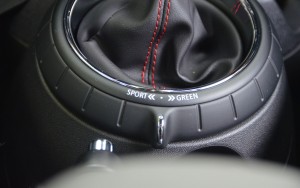
With the manual six-speed, the two-door Mini can scoot to 60 in about 7.3 seconds. That is very quick relative to other economy-engined cars in this class. For some sense of just how quick that is, consider the base-engined Fiat 500. It has a 1.4 liter four-cylinder engine that makes a meager 101 hp and even with the manual (just a five-speed) the car takes 10.5 seconds to get to 60.
That’s a three second difference – which is a big difference.
Surprisingly, there’s almost no mileage difference between the not-so-speedy 500 and the sprightly Mini: 29 city, 40 highway vs. 31 city, 40 highway (for the Fiat).
Mini says the four-door version will deliver those excellent numbers, too.
In other words, the four-door Mini is not only quicker than the two-door Fiat, it is just as fuel-efficient.
How about that?
Optional equipment (two doors or four) is a turbo 2.0 four that makes 189 hp. This engine is also available with your choice of the manual six-speed or (optionally) the six-speed automatic.
It’s quicker than the base-engined (three cylinder) Mini… but not by all that much. With the manual, an S (two-door) gets to 60 in 6.5 seconds (the four-door is slightly less quick, due to its greater weight; it takes about 6.6 seconds, according to Mini).
If the three-cylinder Mini weren’t so quick, the S would seem quicker. But its performance is so good it kind of overshadows the S’s performance.
Gas mileage is still very good, however: 26 city, 33 highway with the six-speed automatic and 24 city, 34 highway with the manual. This goes for both the two and four-door Minis.
One thing to be aware of, though, is that both Mini engines require premium fuel. Not just the S’s engine. The base three-cylinder engine, too.
As with any modern computer-controlled car (which has the ability to sense lower-octane fuel and adjust such things as ignition timing and turbo boost to avoid mechanical damage to the engine) you won’t hurt your Mini – base engined or S – by feeding it regular unleaded.
But you will get less power/performance (and reduced mileage), which negates the savings of buying the cheaper stuff.
So you might as well spring for premium.
ON THE ROAD
Let’s Motor! is Mini’s motto.
The Mini is all about having fun behind the wheel. Its quickness, agility and economy all in one is hard to find anywhere else – at least, at this price point. The Fiat 500 scores high on agility and economy, but unless you spring for the turbo you’ll be doing without quickness.
Adding the extra pair of doors – well, offering them if you need them – was obviously done to give people who liked the package (but not the packaging) what they needed to buy in. The tricky part was adding the extra metal (and length and wheelbase) without altering the fundamental mini-ness of the Mini.
There is a roughly 150 pound curb weight difference between a two-door Mini (2,605 lbs.) and a four-door Mini (2,750 lbs.) and this explains the tenth or two lag behind, 0-60, of the four-door. But seat-of-the-pants-wise, it’s very hard to tell a 6.5 second to 60 run from a 6.4 second run. So, don’t sweat it unless you’re racing for money and even then, victory is often determined by the reflexes of the drivers when two cars are that evenly matched.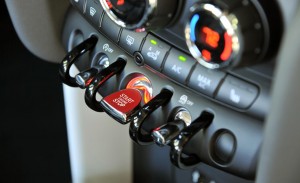
Sluicing through the corners, though, there is a noticeable difference The four-door’s wheelbase is almost 3 inches longer (101.1 inches vs. 98.2 for the two-door) and this affects the car’s dynamics in ways that you can feel. Both are exceptionally nimble, but the two-door’s more so.
And not just when apexing.
When parking, the two-door is easier to slot into tight spaces because it’s about seven inches shorter overall (about 151 inches vs. about 158; the standard and S models are slightly different). That margin also matters when you’re using your Mini to play Frogger in heavy traffic. The two-door can get away with more simply because there’s less of it. You can take advantage of seemingly impossible openings that would be inconceivable in larger cars – and more of a challenge in the larger (four-door) Mini.
But, the four-door is still much more thread-the-needle-ready than the Clubman wagon (162.2 inches long) and that’s the object of this exercise. To build a more practical Mini that’s still.. a mini.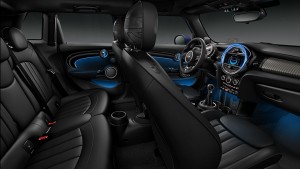
All the other virtues of the two-door carry over, too. The excellent forward and to the sides visibility provided by the expansive glass area (including rear quarter glass) and the famously Mini short hood. The road is about three feet in front of your feet – and that puts you in tune with the road like next-to-nothing-else that’s not a motorcycle. The six-speed manual is simple honest fun but the turbo’d engines (either of them) work great with the automatic, too.
The inside is as playful as the exterior – right down to the quirky alert noises made by the Mini that sound like nothing else. LED mood lighting changes color according to the car’s … mood (red for motoring hard; cool green for when you’re not motoring hard). Aircraft-style (and wonderfully tactile) toggle controls for various functions not only look neat they work great. So much better than the feel-less tap/swipe stuff that’s becoming popular for reasons that make no sense to me at all.
Operating an iPad at your desk is one thing; trying to accurately finger-swipe a flatscreen in a moving car is another.
Well, it has four doors now – if you want ’em.
They not only make accessing the second row easier, the second row is physically roomier, too. Because the four-door Mini is a bit longer (by about six inches) than the two-door Mini. This slight stretch made it possible to carve out 32.3 inches of rearseat legroom – vs. 30.8 in the two-door. This makes the four-door’s second row grown-adult-viable, even if the grown adult in question is well over six feet tall, like me. The back doors are a little narrow and you do kind of have to rotate sideways and then swing your legs in after you… but once you’re in it’s not torturous. You have as much space as you would in a coach seat on an Airbus, but the materials around you are a lot nicer (including the same cheerful contrast-application of different colors and textures, chrome here, a piece of piano black trim there). The Mini’s flat roofline also helps to maintain decent headroom in the second row (37.5 inches, about half an inch more than in the two-door and about two inches more than in the back seat of a Fiat 500 (35.6 inches).
More cargo room has also been carved out: 13.1 cubic feet behind the second row, vs. 8.7 cubic feet for the two-door.
The Fiat 500 only has 9.5 cubic feet of “trunk” space.
Otherwise, the four-door is pretty much exactly like the two-door. Same British bulldog face (by way of Bavaria) and Happy Days jukebox interior layout. Like the original Mini of the ’60s, there’s more usable space in this small car than you’d expect based on the car’s external size. It does not feel small once you’re in.
Cozy, yes – but that’s another (and better) thing.
Retro (analog speedo and tach) and modern (large – and round – LCD display in the center stack, with an LED “mood ring” surround that changes color as you drive, depending on how you’re driving ) combine not clumsily. It’s not an easy trick, but Mini makes it seem so. There is nothing awkward or trying-too-hard about the car. The toggles and ball-type air vents are examples of excellent functional design that also happens to look neat, too.
The two-tone paint combos, racing stripes and decal packages allow almost infinite exterior customization.
Another thing-in-common the Mini has with BMWs is that satellite radio is not included. Even in the S model four-door I tested, which had a sticker price south of $35,000. I was (cue Geraldo voice) shocked! to find I only had AM and FM to accompany me. You expect that in a $15k car.
But a $35k car?
You do, however, get a refrigerated glovebox as part of the standard equipment package in the base trim Mini. And the standard audio rig is an HD rig with six speakers and a USB port.
Buyer’s note: The Mini is one of the few new cars that comes standard with 15 inch wheels. These fit the car’s proportions nicely but be aware that the selection of 15 inch replacement tires is not nearly as wide as tires in 16 and 17 inch and larger sizes. Especially performance compound tires. Reason? So few modern cars – even economy cars – come with 15-inch wheels.
The S comes with a torque-vectoring electronically locoing differential, hood scoop and 16-inch run-flat tires.
The optional Heads Up Display (HUD) projects GPS map info – in addition to the usual stuff (your speed) and is arguably more functionally useful to the driver as a result.
The BMW-familiar will recognize the Mini’s mouse-esque Touch Controller in between the front seats. It looks – and works – very much the same way in both cars. And that’s a compliment. Six main buttons (e.g., Navigation, Media, Radio, Telephone, Back and Option) to access the particular menu you want, then rotate the mouse/wheel left or right to scroll/tab/click to what you’re after.
It’s not just an easy car to drive – it’s a pleasant (and fun) car to drive. As cheerful as the Austin Powers sound track.
Oh, behave!
If you always wanted just a little bit more Mini, here you go. No need to step up to the Countryman. No need to make your passengers suffer.
No need to buy a second car, either.
Well-done, as they say in the UK!
If you value independent media, please support independent media. We depend on you to keep the wheels turning!
Our donate button is here.
If you prefer to avoid PayPal, our mailing address is:
EPautos
721 Hummingbird Lane SE
Copper Hill, VA 24079
PS: EPautos stickers are free to those who sign up for a $5 or more monthly recurring donation to support EPautos, or for a one-time donation of $10 or more. (Please be sure to tell us you want a sticker – and also, provide an address, so we know where to mail the thing!)


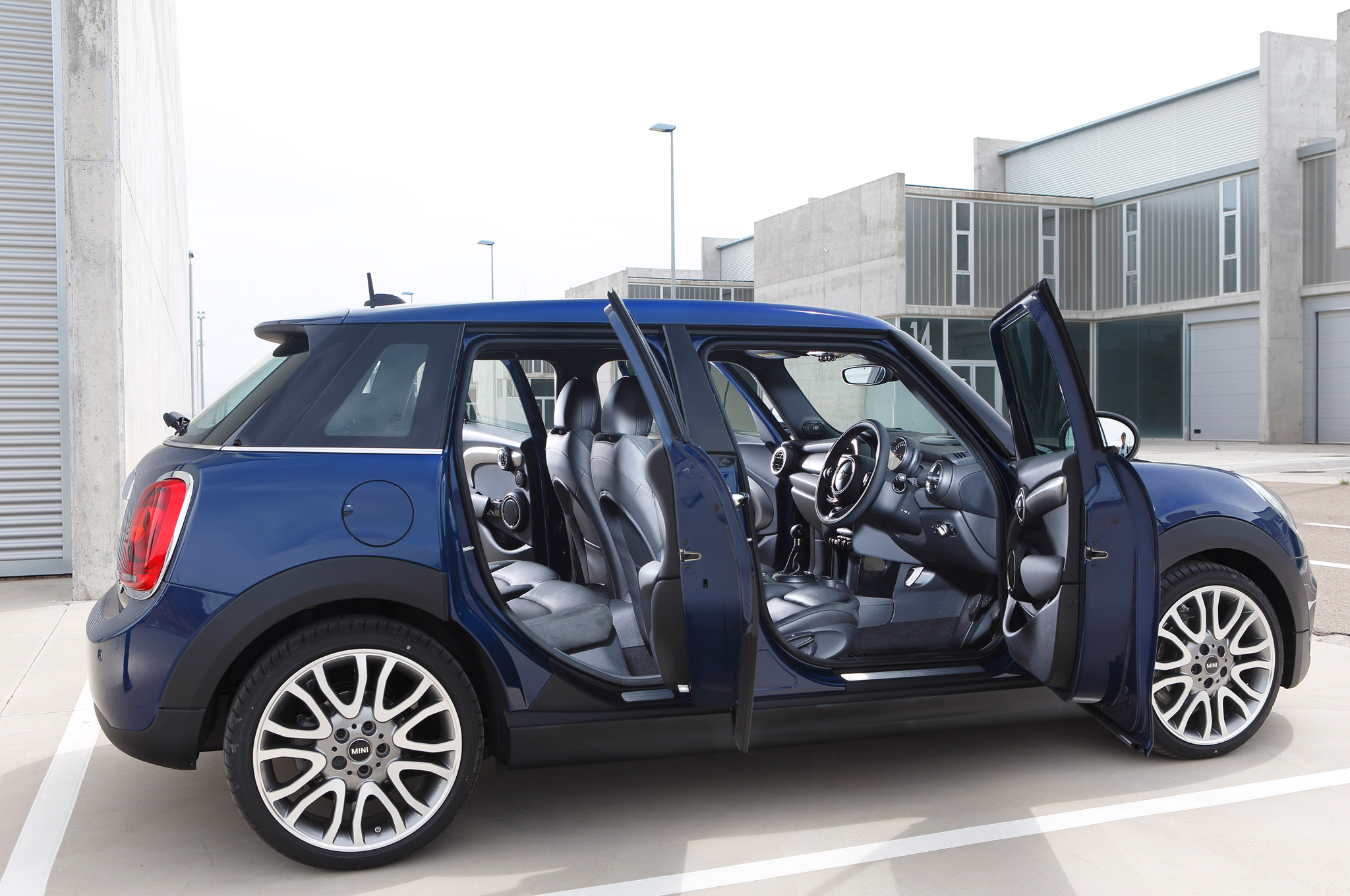


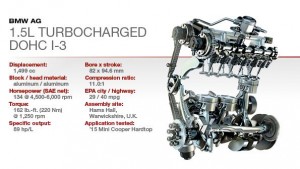











The way the MINI has been enlarged has made it look bloated, like a person afflicted with water retention.
I just can’t see ever paying good money for the “new and improved” model.
Now, if I were in the market for a hatchback, I would probably opt for the Mazda 3, which you favorably reviewed not long ago.
Morning, Bevin!
I agree, the four-door’s not for me, either. It defeats the whole purpose, as we both see it. But I understand Mini’s decision. It’s of a piece with Porsche’s much-derided decision to build the Cayenne and Panamera. A Porche SUV! A Porsche sedan? Porsche purists were appalled. But Porsche correctly surmised that there were plenty of potential buyers who wanted a Porsche… just not a 911 or Cayman or Boxster!
Dear Eric,
True! I’ve even seen a number of Cayennes and Panameras here on the streets of Taipei.
I kind of understand the appeal of the Panamera, more so than the Cayenne. I can see how someone might want a sports car that
1. can seat four adults in comfort
2. is not a cramped 2+2
3. has a lower seating position than a BMW or Audi, therefore feels like a sports car rather than a sport sedan
The Panamera doesn’t look bad from a front or front quartering view. Unfortunately it looks pretty clunky in the side elevation.
It’s nice but it’s no oldie but goodie from years past. Drove one made by BMC when I lived in Germany and what a fun car that was!!
Hi Harry,
Ditto – I feel the same way!
Walking past a Mini in a parking lot, I see this sticker in the back window – “Actual Size” – boy they’re really strict enforcing the truth in advertising laws.
PtB, the burger joints must get a bye.
LOL – I was living in DFW area in the early 80s when Jack in the Crack got caught selling kangaroo burgers. “We can’t make both ends meat!”
“Automotive diorama” back seats…..that’s pretty good. 🙂
Visually, this Four-Door is a winner.
Seems like an ideal package for an urban dwellers who want more from their ride than just a small transportation appliance.
If I were in that category, would give this one serious consideration.
Thanks, Mike!
I dig the Mini, too. Both versions..